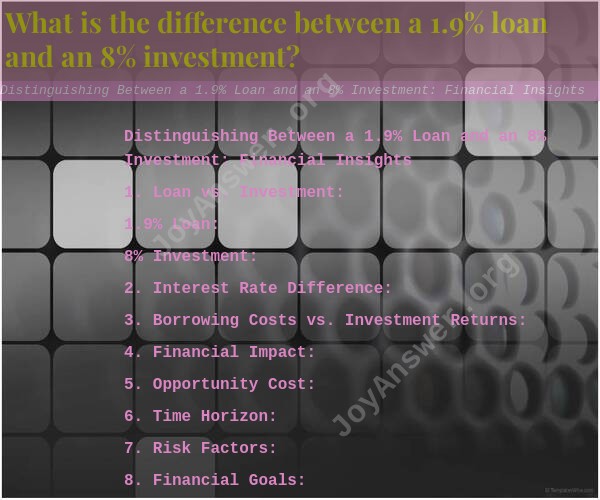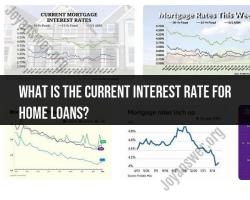What is the difference between a 1.9% loan and an 8% investment?
Distinguishing Between a 1.9% Loan and an 8% Investment: Financial Insights
Comparing a 1.9% loan and an 8% investment involves understanding the concepts of borrowing and investing, as well as the implications of interest rates. Here's a breakdown of the key differences and financial insights:
1. Loan vs. Investment:
- 1.9% Loan: This refers to borrowing money at an interest rate of 1.9%. You receive a sum of money from a lender, and you're required to repay the borrowed amount plus interest over a specified period.
- 8% Investment: This means investing your money at an annual return of 8%. You're putting your money into an investment vehicle with the expectation of earning returns over time.
2. Interest Rate Difference:
- The loan carries an interest rate of 1.9%, which means you'll pay 1.9% of the borrowed amount as interest each year.
- The investment has an expected annual return of 8%, indicating that you'll earn 8% of your invested amount as returns each year.
3. Borrowing Costs vs. Investment Returns:
- With a 1.9% loan, you'll incur borrowing costs in the form of interest payments. You're essentially paying extra money on top of the borrowed amount.
- With an 8% investment, you're earning returns on the invested amount. You're generating additional income or gains from your initial investment.
4. Financial Impact:
- A 1.9% loan means you're paying interest to borrow money. It's important to assess whether the cost of borrowing is justified based on your financial goals and the purpose of the loan.
- An 8% investment suggests that you have the potential to earn a return on your investment. However, investments carry risks, and returns are not guaranteed. You'll need to evaluate the risk-return trade-off before investing.
5. Opportunity Cost:
- When deciding between borrowing at 1.9% and investing at 8%, consider the opportunity cost. If your investment returns exceed the loan interest rate, investing might be more favorable.
6. Time Horizon:
- Consider the time frame of the loan and the investment. Short-term loans and investments might have different implications compared to long-term ones.
7. Risk Factors:
- Investments come with inherent risks, and the actual return on an 8% investment might fluctuate. Borrowing costs for a loan are generally fixed.
8. Financial Goals:
- Your financial goals and circumstances play a crucial role in determining whether to take a loan or make an investment. Are you looking to finance a purchase, consolidate debt, or achieve specific investment objectives?
Conclusion:Deciding between a 1.9% loan and an 8% investment involves a careful assessment of your financial situation, goals, risk tolerance, and time horizon. The choice depends on factors such as the purpose of the loan, the potential return on the investment, and your overall financial strategy. It's advisable to consult with financial advisors to make informed decisions that align with your individual needs and objectives.













